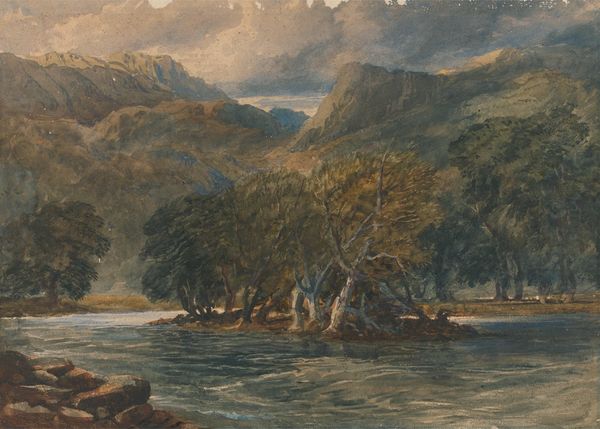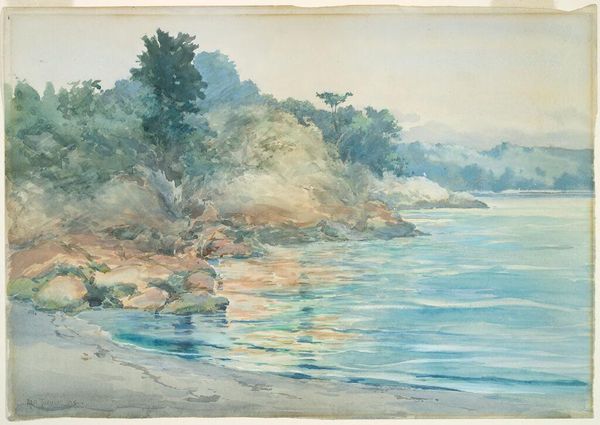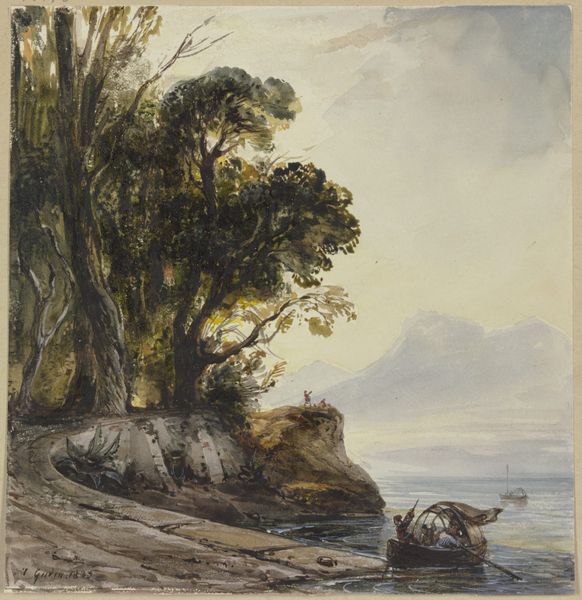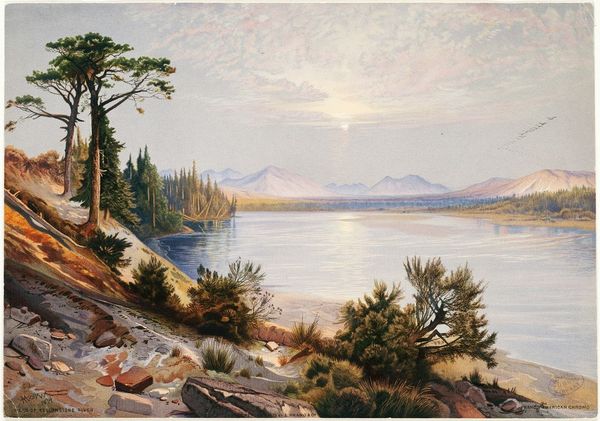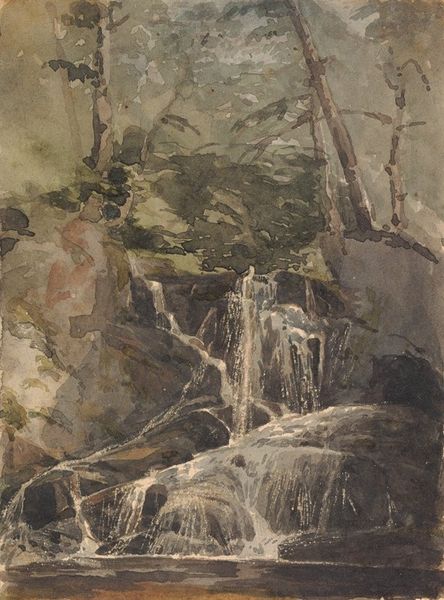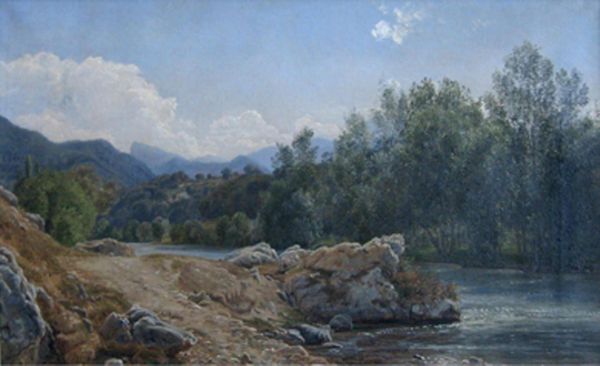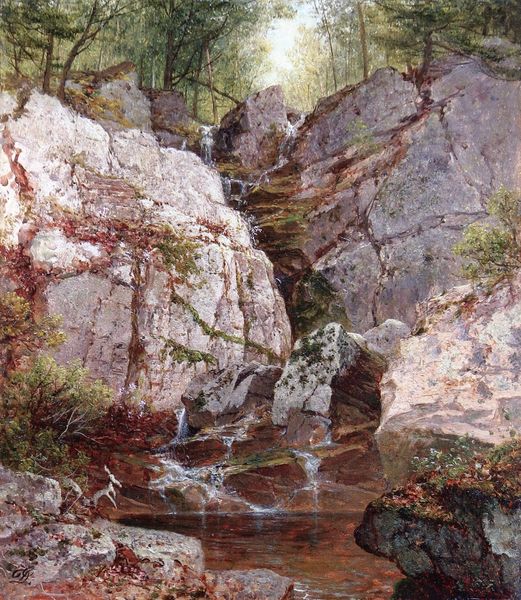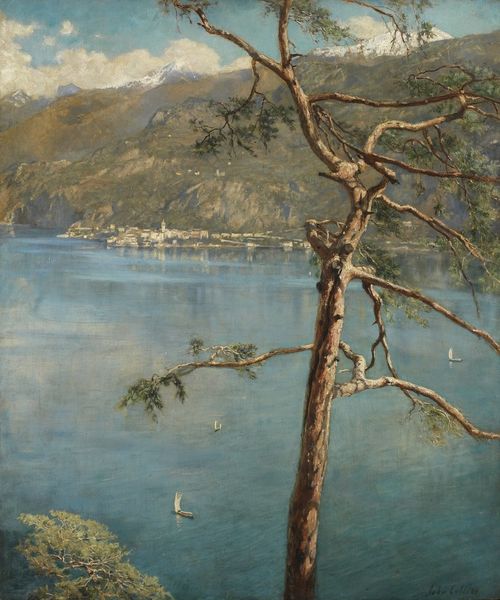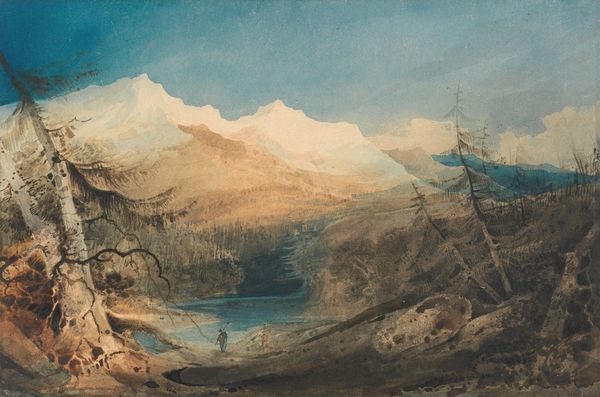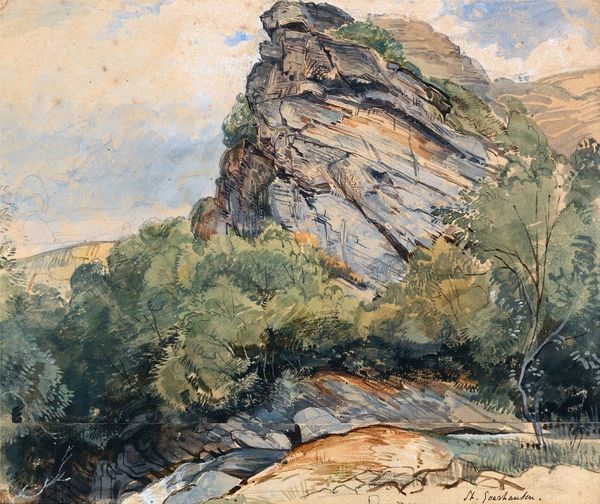
Copyright: Public Domain: Artvee
Edward Theodore Compton created this watercolor painting, Eibsee. With fluid brushstrokes, Compton captured the interplay of light and water, which are, of course, integral to the medium itself. Watercolor demands a certain spontaneity; each stroke is to some extent irreversible, and the artist must work with the tendencies of the paint as it blooms across the absorbent surface. Looking closely, you can see how the pigment pools and settles, creating subtle textures and gradients. The choice of watercolor speaks to a broader culture of leisure and landscape appreciation. It's easy to imagine Compton with his paints outdoors, recording impressions of nature. Watercolor became popular with the rise of tourism in the 19th century, with artists documenting picturesque destinations for an increasingly mobile middle class. The rise of this culture of plein air painting challenged academic art practices, emphasizing direct experience and immediacy. And, for us today, it encourages us to think about the connection between landscape, leisure, and artistic creation.
Comments
No comments
Be the first to comment and join the conversation on the ultimate creative platform.
